By German Tirado, July 22, 2025
Introduction
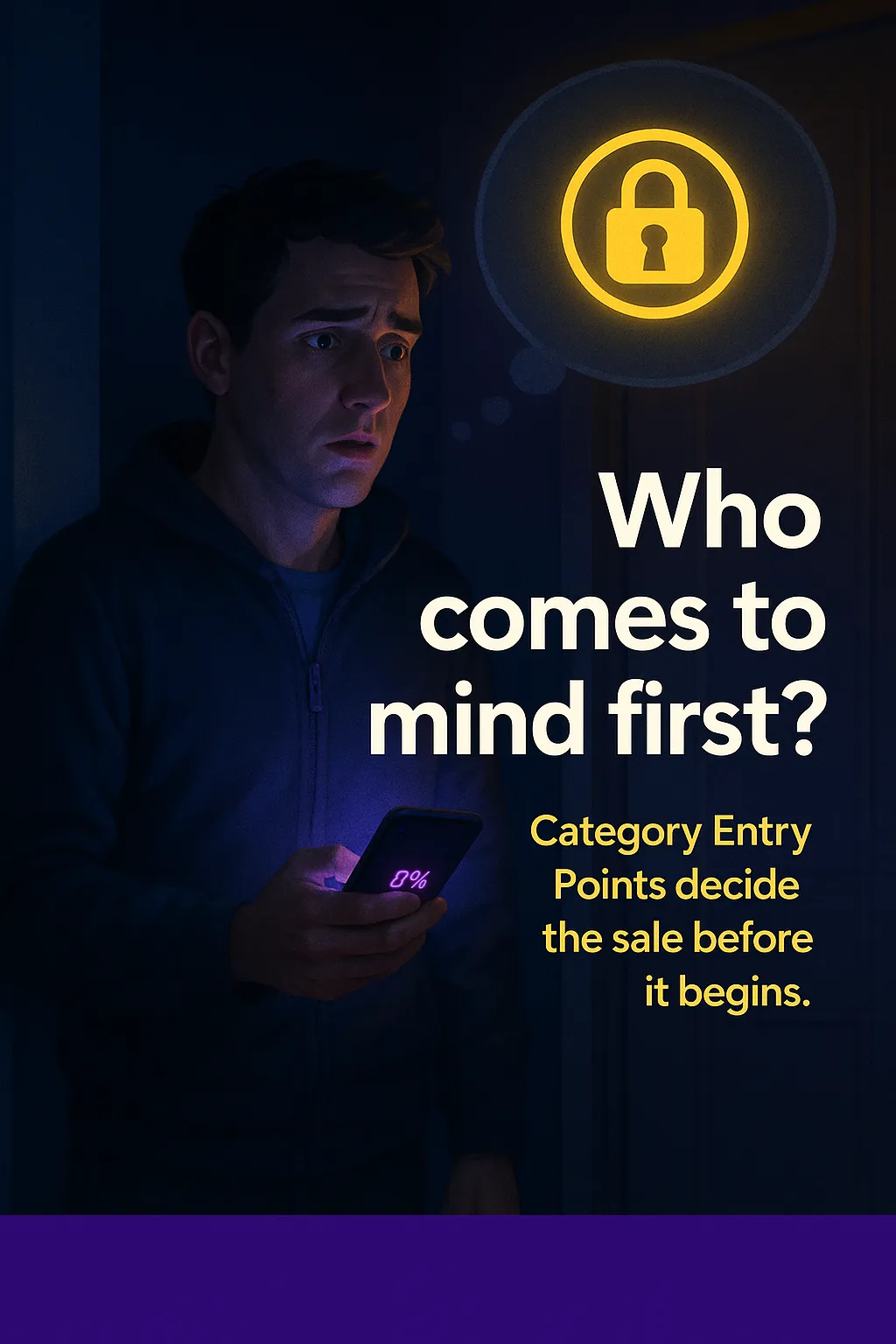
Up to 95% of category buyers are out of market on any given day. When their need does surface, the brand they can recall fastest usually wins the sale, no loyalty scheme or “purpose” line can compensate for invisibility [95-5]. The mechanism behind that instant recall is a web of Category Entry Points (CEPs): the real-world moments, needs, and cues that push buyers into buying mode. Big brands are simply linked to more CEPs than small ones, which explains their higher penetration and slightly stickier loyalty [CEP-B2B]. Learning to find, measure, and refresh those links is therefore the shortest, evidence-backed route to growth [HBG2].
Imagine waking up at 2 a.m. to the sickening click of a locked door behind you. Your phone battery sits at 8 percent. Which locksmith pops into your mind first? That split-second recall—shaped by the context you are in, not by any rational feature checklist, decides who gets the sale. Marketing science calls those contexts Category Entry Points (CEPs), and they are the backbone of how brands grow [HBG1].
CEPs are the real-world moments, needs, emotions, and social situations that trigger purchasing or brand search. They differ from traditional “needs states” because they are empirically measurable cues linked to memory structures, not creative hunches. Large-scale studies show that the brands consumers mentally connect to the widest variety of CEPs enjoy higher market penetration and even slightly stronger loyalty, advantages explained by laws such as Double Jeopardy and Duplication of Purchase [HBG2]. In B2B insurance, for instance, every extra CEP association cut customer churn by roughly five percent at renewal [CEP-B2B].
Why does this matter today? Because as few as 5 percent of buyers are “in market” right now; the rest are future buyers whose memories quietly decay every month [95-5]. Digital retargeting can’t reach that silent majority, but ads, landing pages, and even telephone-answering scripts crafted around specific CEPs can refresh those fading links, so your brand surfaces instantly when the need finally arises.
Whether you sell AI-powered internet marketing services, 24/7 telephone answering services, or canned coffee, mastering CEPs lets you win the mental race long before the buyer fires up Google or asks Siri for help. The pages ahead give you a research-backed, practical playbook to map, measure, and activate those entry points, so your brand is top-of-mind when it counts.
You’ll learn:
What CEPs are (and aren’t)
How to map them with the revised “W” taxonomy
Research methods to size white-space CEPs
Creative and media tactics to build links fast
Metrics that prove momentum
Whether you sell internet marketing services, run telephone answering services, or market fast-moving goods, the principles travel. Let’s dive in.
1. What Exactly Are Category Entry Points?
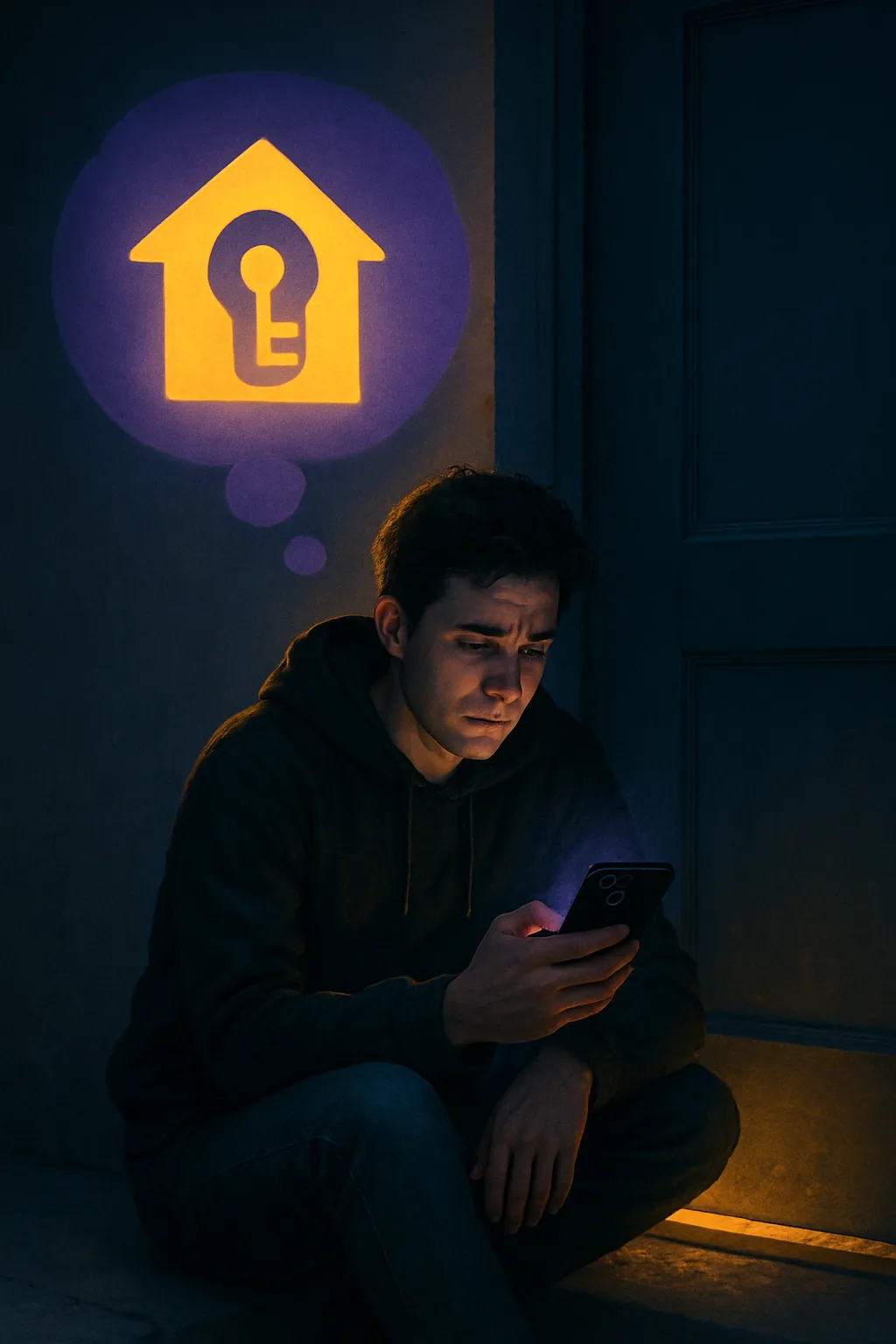
CEPs are the category-relevant cues that spark memory retrieval. They can be situational (“I’m locked out at 2 am”), emotional (“I feel overwhelmed by admin”), or social (“My boss asked for a quote”). Crucially, CEPs are about the buyer’s context, not your brand positioning. Treat them as mental doorways: each doorway that bears your name enlarges the share of buyers who think of you when it counts [CEP-B2B].
Don’t confuse CEPs with benefits or RTBs. “24/7 service” is a claim. The CEP is “When it’s the middle of the night and I need help”.
2. Why CEPs Drive Penetration and Profits
Three empirical laws explain their power:
Double Jeopardy – Small brands suffer twice: fewer buyers and slightly lighter loyalty. Building extra CEP links widens the buyer base and softens the second penalty [HBG1].
Duplication of Purchase – Buyers of Brand A also buy Brand B in line with market share. More CEPs = more chances to join that repertoire.
95-5 Rule – Out-of-market buyers don’t click retargeting ads. CEP-oriented broadcast keeps your brand in memory until their need emerges [95-5].
Brands that grew CEP reach by just one extra cue
per buyer saw churn at renewal fall by ~5% in B2B insurance studies [CEP-B2B].
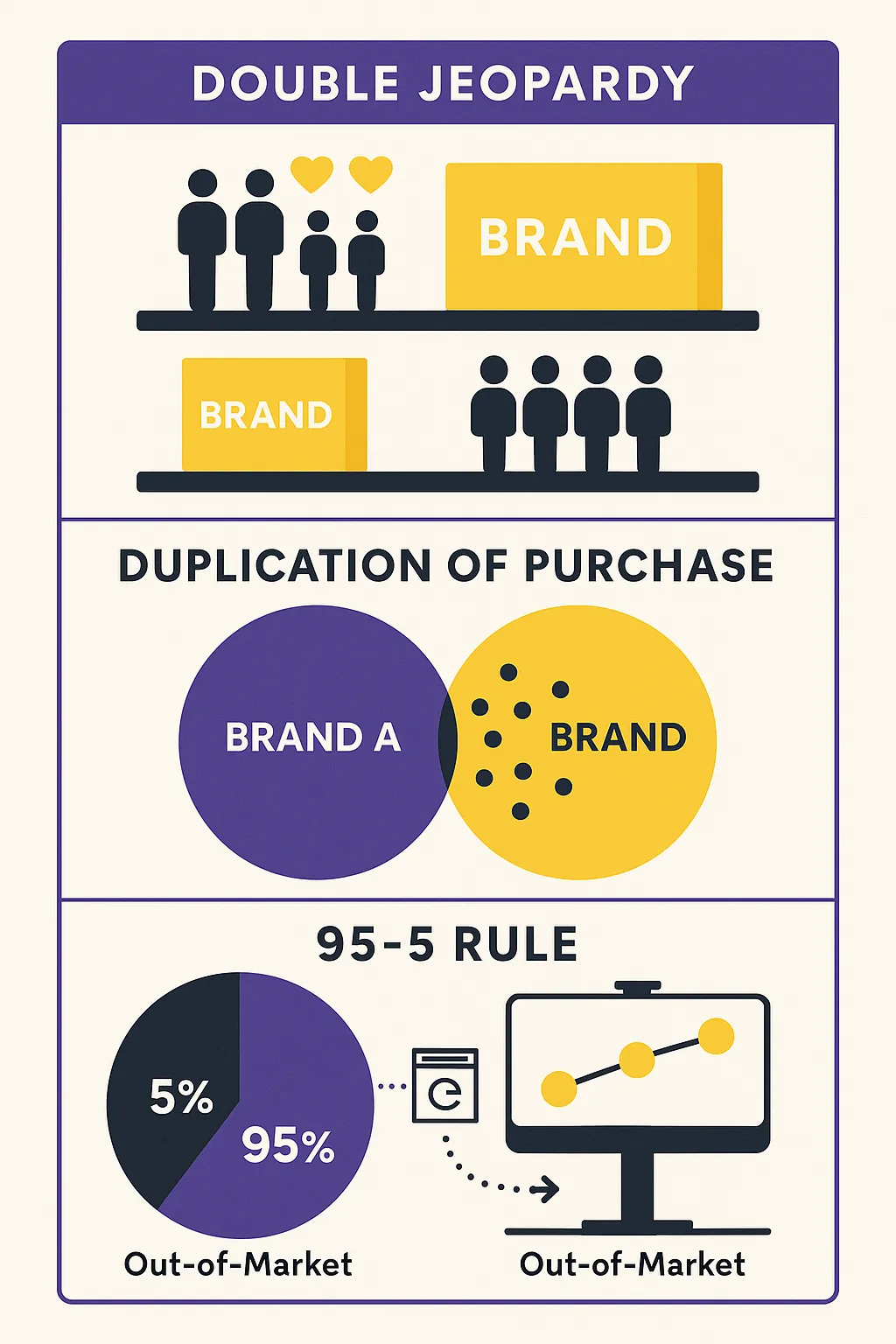
3. Mapping the CEP Universe with the Revised “W”s
Start broad. Assemble marketers, sales staff, and even customer-service logs. Brain-storm under seven lenses:
Revised “W”
When
Where
While
With / Instead-of What
With / For Whom
How Feeling
Why
Prompt
Timing cues
Physical/digital locations
Activities done concurrently
Co-consumed or replaced categories
Social context
Emotional states
Functional motives
Locksmith Example
“When I move house”
Outside my front door”
“While scrolling Yelp for trades”
“Instead of calling 911”
“For my elderly mum”
“Panic at 2 am”
“Need to feel safe again”
4. Sizing and Prioritising CEPs
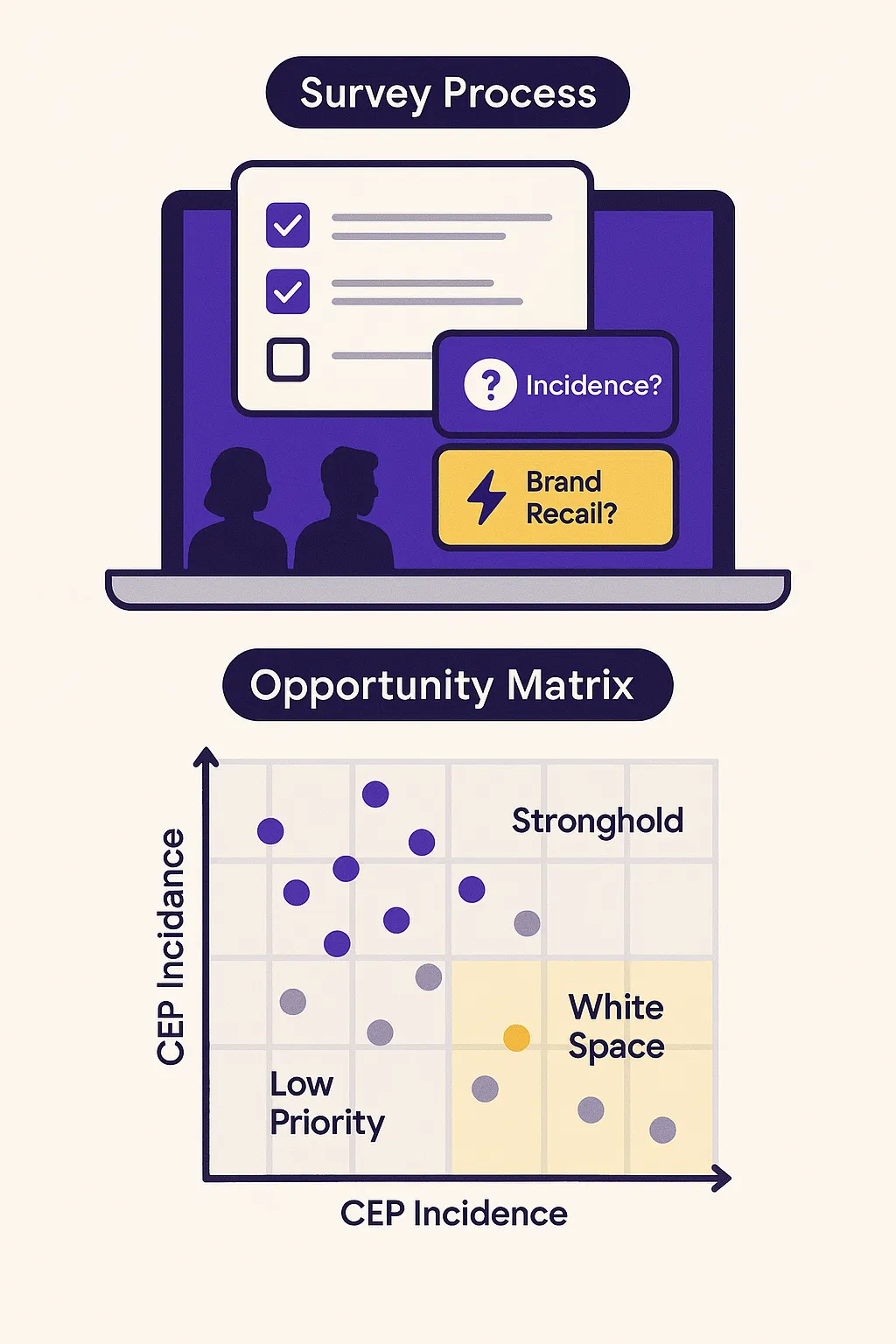
4.1 Survey Design
Run an online survey of 300-500 category buyers:
Incidence Question – “Have you experienced [CEP] in the past 12 months?”
Brand-Recall Question – “Which brand comes to mind first for that situation?”
Calculate:
CEP Incidence – % of buyers who face that cue.
Brand Linkage – % of those buyers who name your brand.
4.2 Opportunity Matrix
Plot Incidence (x-axis) vs. Brand Linkage (y-axis). High-incidence / low-linkage CEPs = white space. Prioritise 3-5 per year.
5. Activating CEPs in Creative & Media
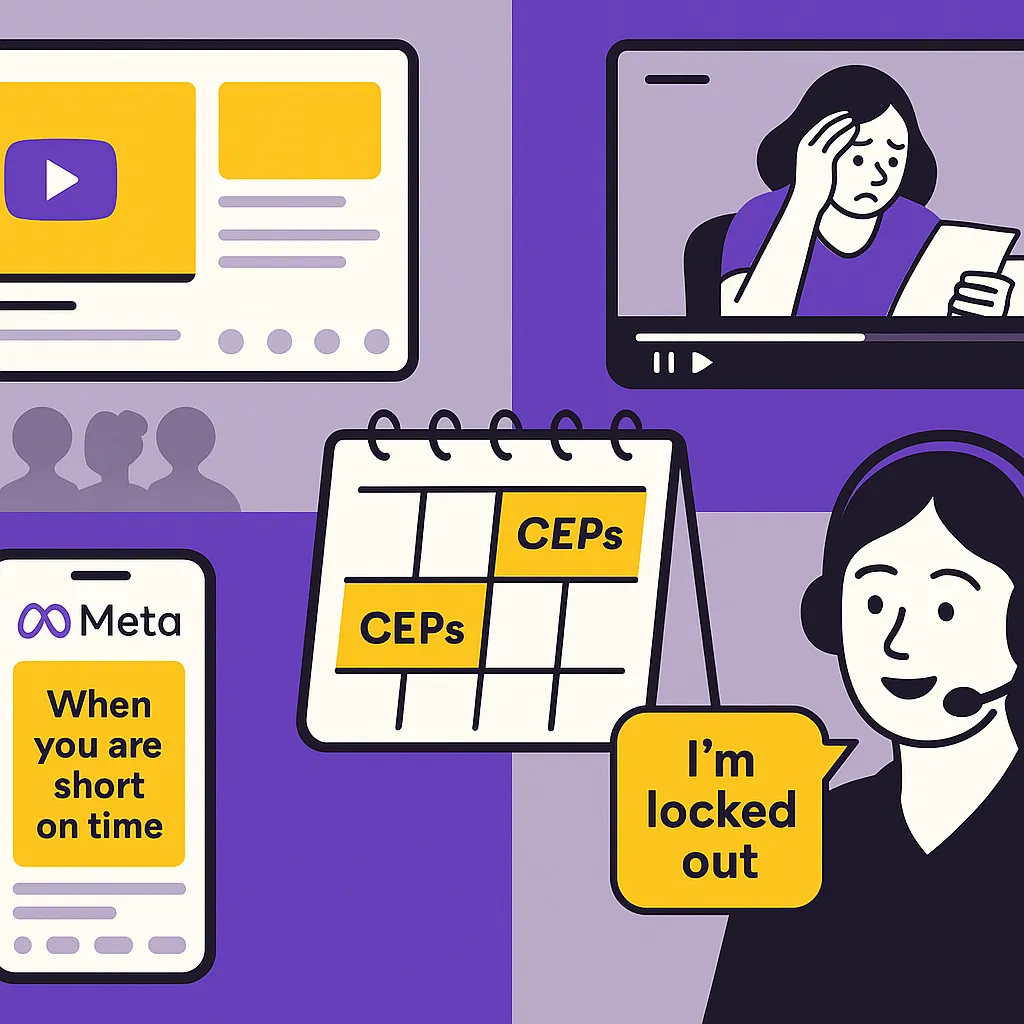
One CEP per Execution – Simplicity beats lists. A 15-second YouTube bumper can’t handle three occasions [BDA].
Brand Fast, Brand Loud – Flash your distinctive assets (colour block, sonic sting, shape) in the first two seconds. Skip-happy viewers still encode the link [HBG1].
Rotate CEPs – Use a flighting calendar so each priority CEP receives at least two exposures per buyer annually.
Choose Broad-Reach Media First – Local radio or Meta reach campaigns typically deliver the cheapest cost-per-thousand for small budgets.
Refresh Sales Aids – Update Google Business Profile Q&A, Meta ad copy, and telephone answering service scripts so each reflects the target CEPs.
6. Practical Example: AI Answering Service for Locksmiths
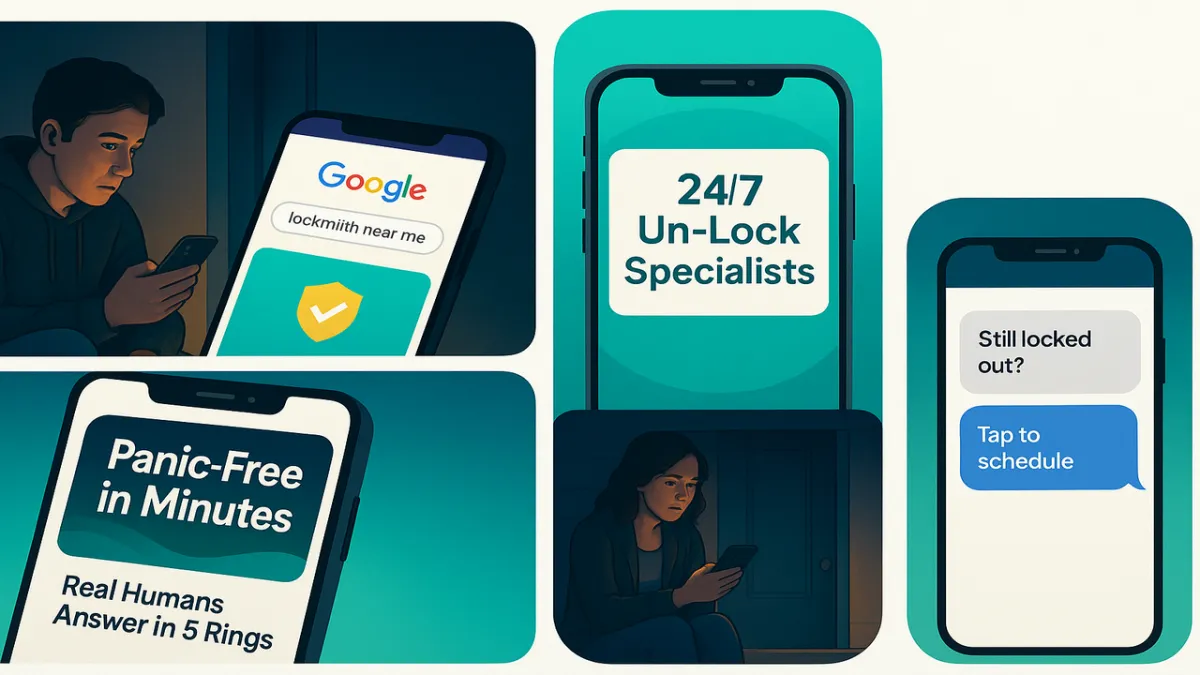
Max Digital Edge (MDE) offers AI-powered internet marketing services and after-hours answering. Applying CEP thinking:
CEP Identified: “When I’m locked out at 2 am and Google a locksmith.”
Media: Google Local Service Ads with headline “24/7 Un-Lock Specialists—Real Humans Answer in Five Rings”.
Distinctive Asset: MDE’s teal gradient + sonic sting.
Landing Page Copy: Reinforces the time cue (“middle of the night”) and emotional state (“panic-free in minutes”).
Follow-Up SMS: “Still locked out? Tap to schedule a technician now.”
Linking brand + CEP at every touchpoint ensures MDE’s client appears first when the urgent need strikes.
7. Metrics to Track & Targets
Metric
CEP Reach (% of buyers who link brand to CEP)
Average CEPs per Buyer
Penetration
Share of Impressions on CEP Keyword
Distribution of Hero
SKU/Service
Why It Matters
Direct mental availability read-out
Wider memory web = future sales
Sales reality-check
Ensures media aimed at cue moments
Physical availability for CEP to convert
Target
+3 pp/year on priority CEPs
+0.2 CEPs/year
Beat category growth
80% Impression Share
90%+ of target outlets
Data Source
Annual survey
Same survey
Panel / CRM
Google Ads
Audit
Conclusion
Category Entry Points turn abstract “awareness” into something concrete you can count, refresh and ultimately bank. Each additional CEP you win does three things: it lifts spontaneous recall, nudges more light buyers into your customer base and raises the odds that existing customers will buy again when the same cue re-occurs [HBG1][HBG2]. Because CEPs sit in memory, they compound, just like physical shelf space, mental shelf space is worth more the longer you hold it.
The growth recipe is therefore simple in theory and demanding in practice. First, map a wide universe of raw CEPs using the revised Ws to capture timing, location, emotion and social context. Second, size those cues with incidence-and-link surveys so you know which doors into the category are still unguarded by rivals [CEP-B2B]. Third, build creative that co-presents one cue and your most distinctive asset in the first two seconds; then rotate cues through broad-reach media so every priority CEP sees daylight at least twice a year [BDA]. Finally, track CEP reach, average CEPs per buyer and real sales penetration to prove the memory-to-money link [95-5].
Brands that follow this discipline grow because they become the default answer to more buyer situations, not because they cultivate mystical “love.” If you lack the research bandwidth, partner with a science-driven firm. Max Digital Edge merges Ehrenberg-Bass evidence with AI execution, giving local service businesses 24/7 telephone answering and internet marketing that are coded to the exact moments buyers care.
Remember: markets reward salience plus availability. CEPs are your checklist for the first; distribution, pricing and service hours cover the second. Nail both and you will be the brand they remember, and the one they can actually buy, when it counts.
Frequently Asked Questions (FAQs)
Q1. What exactly is a Category Entry Point (CEP)?
A CEP is a specific situational, emotional or social cue—such as “locked out at 2 a.m.” or “end-of-quarter reporting panic”—that causes people to think of the category and, ideally, your brand [HBG1].
Q2. How do CEPs differ from traditional buyer personas or need-state segments?
Personas describe who buys; CEPs capture when, where, while, with/for whom, how feeling, and why those buyers look for the category. They focus on triggers rather than demographics, which makes them far more actionable for advertising and SEO [CEP-B2B].
Q3. How many CEPs should a brand aim to cover?
Empirical audits show big brands are linked to dozens of CEPs, but most of their sales come from the top 5–10 high-incidence cues. Start by winning three to five white-space CEPs, then expand once those links reach critical mass [HBG2].
Q4. What research methods identify and size CEPs?
Run incidence-and-link surveys: (1) ask buyers which cues they experience, (2) ask which brands they recall for each cue, and (3) calculate “CEP reach” and “brand linkage” to spot gaps [CEP-B2B].
Q5. How often should a company refresh its CEP research?
Memory structures and buying contexts drift over time—review your CEP map every three to five years, or sooner if the category is rapidly changing (e.g., AI-powered internet marketing services) [BDA].
Q6. Do CEP tactics work for small, local businesses like locksmiths or 24/7 telephone-answering services?
Yes. Even micro-brands grow penetration when they consistently link themselves to a handful of highly frequent, high-stress CEPs (e.g., “lost keys at midnight,” “missed business call after hours”) [95-5].
Q7. How long before CEP-focused campaigns translate into measurable sales?
Brands typically detect uplift in aided recall within three to six months and see penetration gains within 12–18 months, assuming adequate media weight and distribution support [HBG1].
Q8. Where can I learn more or get help implementing CEPs?
Start with the works cited below for foundational evidence, then consider a strategy session with Max Digital Edge. Our team applies Ehrenberg-Bass principles to SEO, paid media, and AI-driven telephone answering services to lock in the right CEPs for your growth plan.
Works cited
Code Full Reference
[HBG1] Sharp, Byron. How Brands Grow: What Marketers Don’t Know. Oxford University Press, 2010.
[HBG2] Romaniuk, Jenni, and Byron Sharp. How Brands Grow: Part 2 – Emerging Markets, Services, Durables, New Brands & Luxury. Oxford University Press, 2016.
[BDA] Romaniuk, Jenni. Building Distinctive Assets: A Practical Guide to Elevating Brand Identity. Oxford University Press, 2023.
[95-5] Dawes, John, and Jenni Romaniuk. Advertising Effectiveness & the 95-5 Rule: Most B2B Buyers Are Not in the Market Right Now. Ehrenberg-Bass Institute for Marketing Science & LinkedIn B2B Institute, 2022.
[CEP-B2B] Romaniuk, Jenni, John Dawes, and Byron Sharp. Category Entry Points in a Business-to-Business (B2B) World. Ehrenberg-Bass Institute for Marketing Science, 2023.
Address
Phone: 725-240-6870
Email : [email protected]
Address : 6440 Sky Pointe Dr. #140-341 Las Vegas, NV 89131
Artificial Intelligence
Marketing & Branding
Marketing & Branding
©2025 Max Digital Edge | All Rights Reserved
